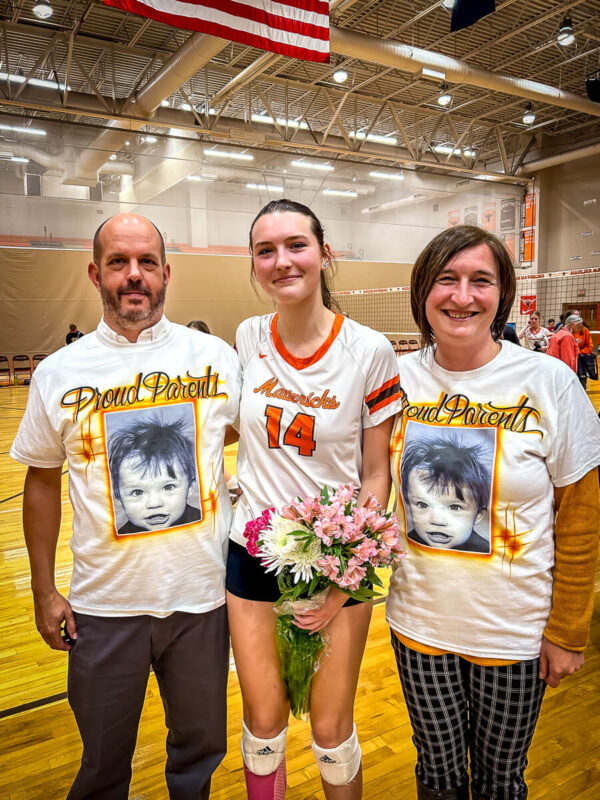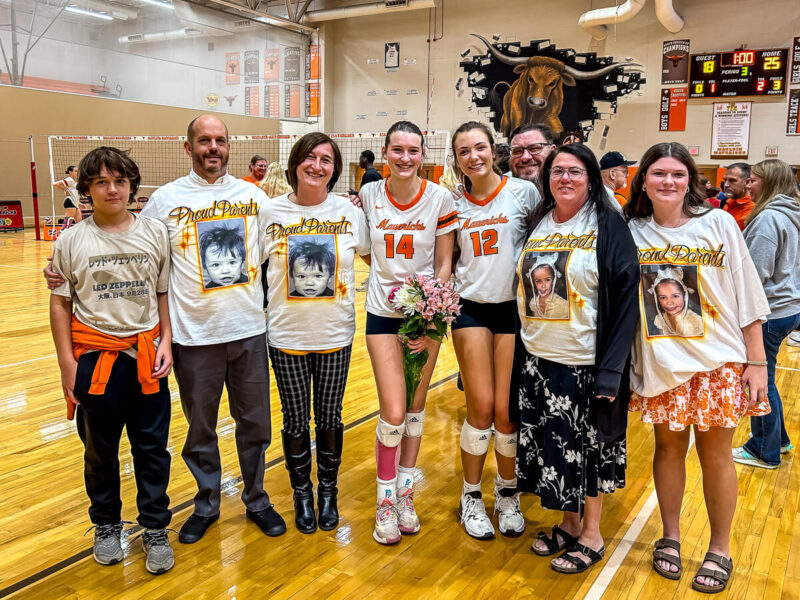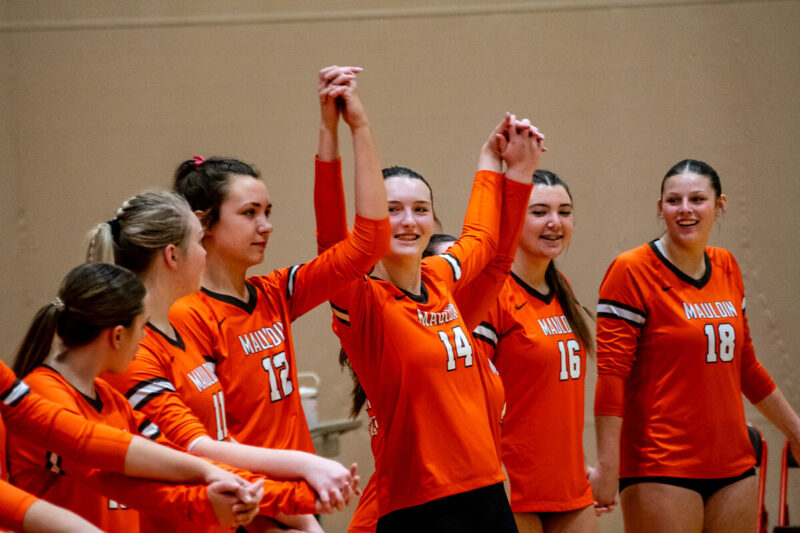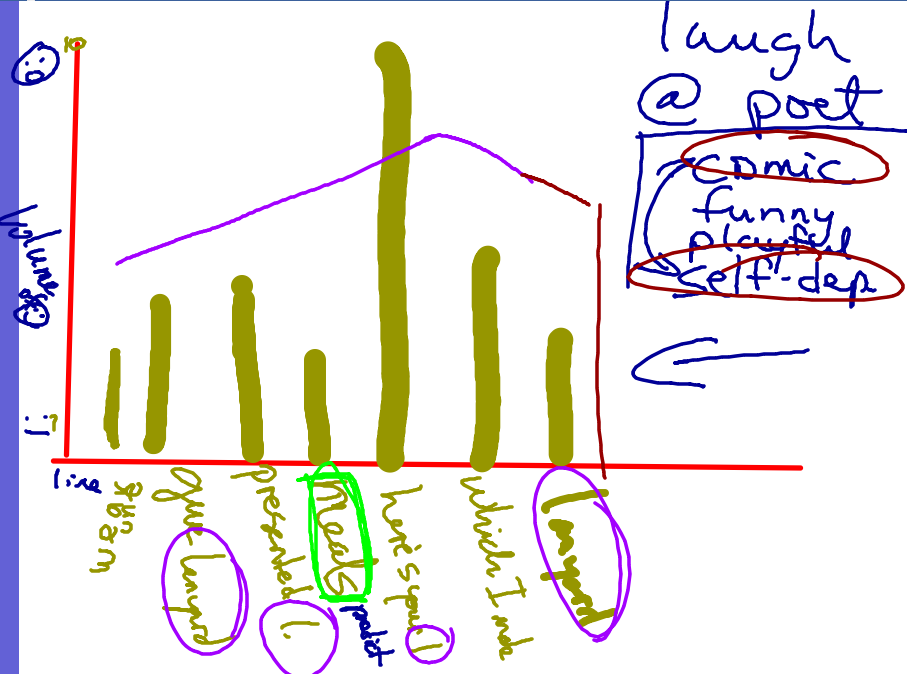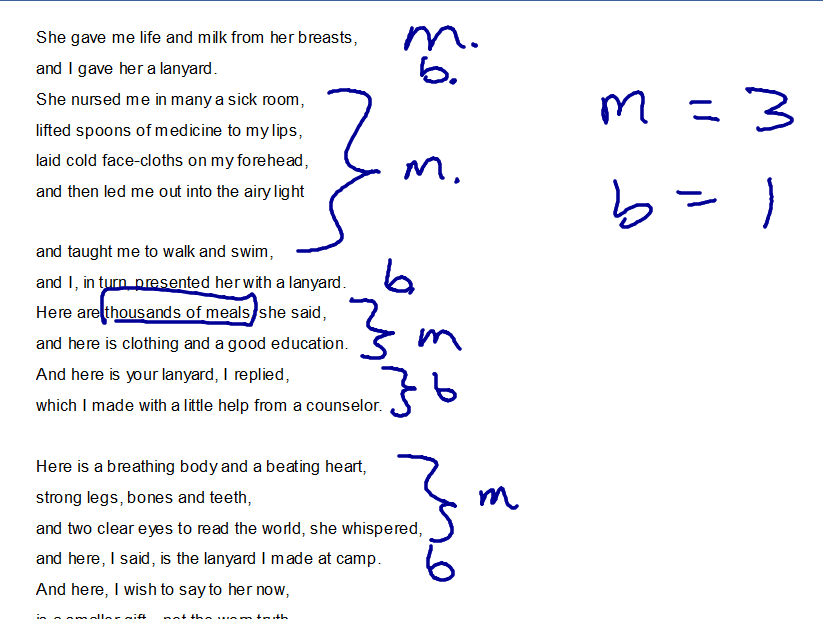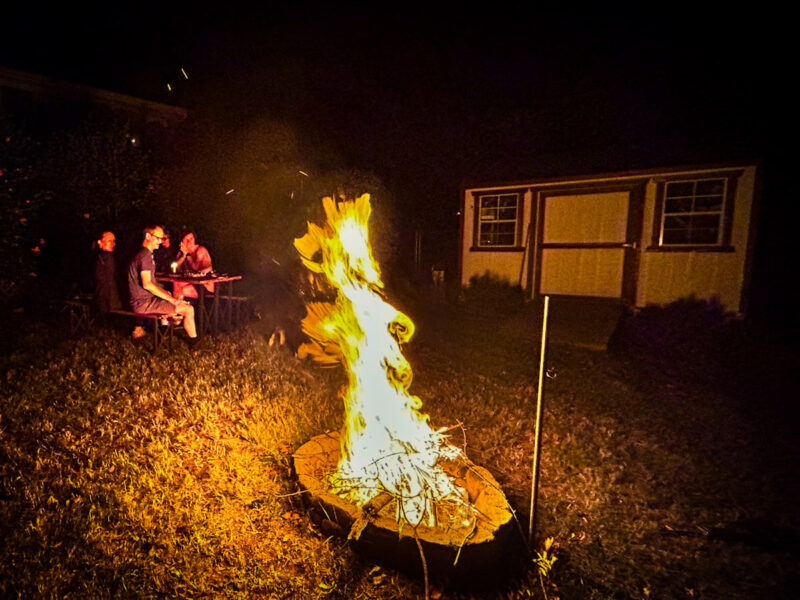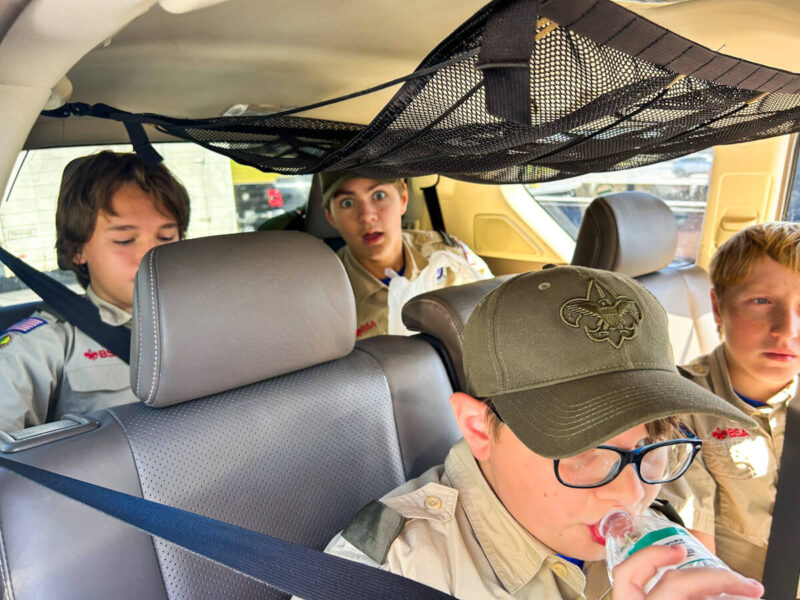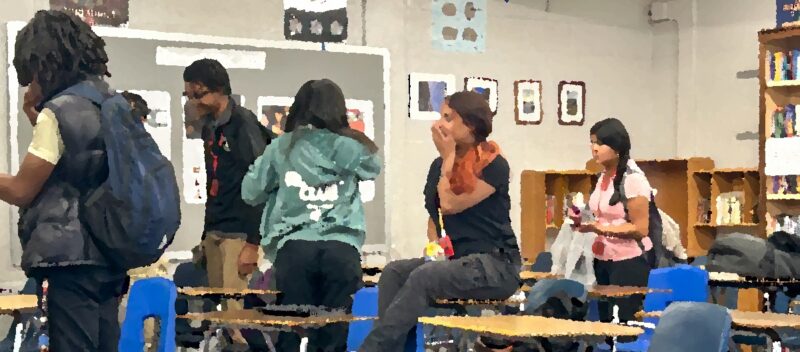Tonight was the Girl’s last regular-season volleyball game. Not of the year. Of her high school career. We have at least one more game as playoffs start: we’ll be playing someone somewhere this Thursday, but we won’t know until tomorrow morning who and where.
Six years of volleyball are coming to an end. It’s hard not to get a little emotional about that. Last year, with the conclusion of the season’s final game (the second or so round into the playoffs — perhaps the first? I can’t remember), L was in tears at the end of the game. “It’s just that’s the last time we’ll be playing with our seniors,” she said as she explained that she wasn’t in tears so much because of the loss.
The shoe is on the other foot now, one could argue. It’s the other girls who should be crying because they’re losing L. “It’s just that we’ll never play with L or S again,” they should be saying. Or maybe the tears last year weren’t just about the senoirs leaving.

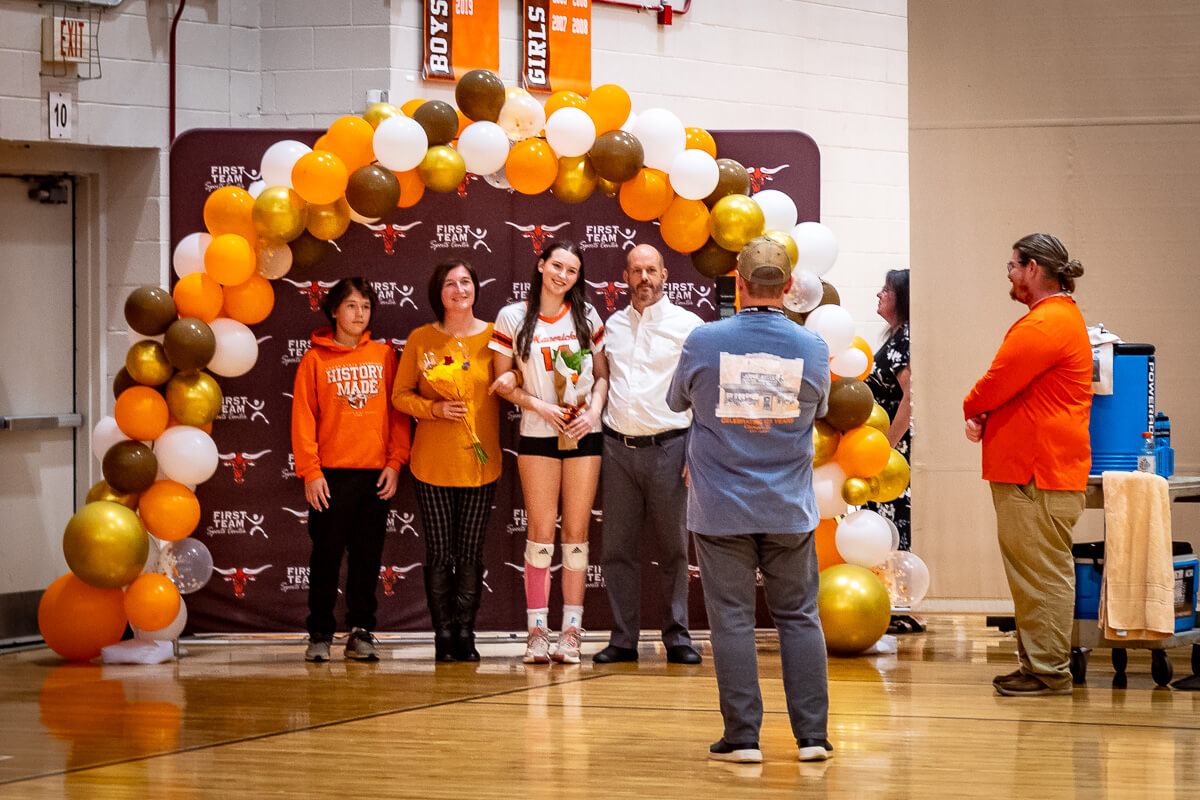
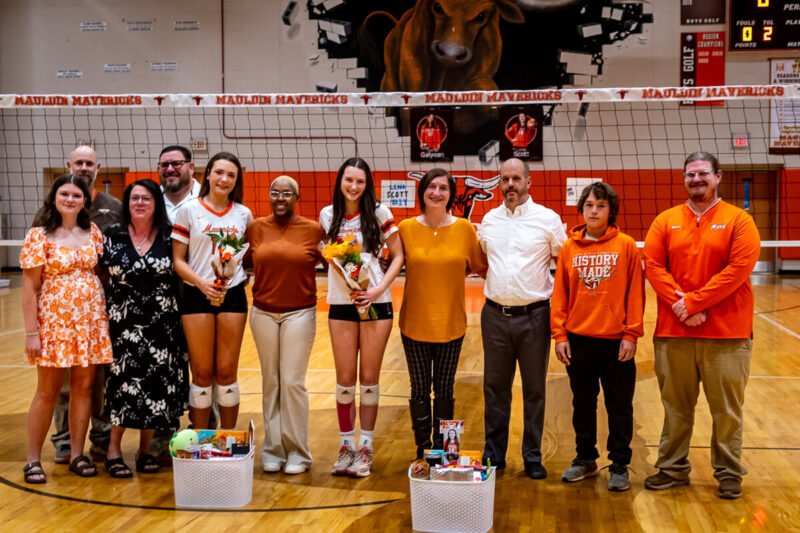
Before the game, we had a ceremony with intros, pictures, and cheers. The girls on the team made gift baskets and posters for the two seniors, and there was a display in the gym entry. The coach had asked parents last week to send some pictures of the girls from various points in their childhood and in their volleyball careers, and she chose a baby picture of each girl and had t-shirts made for the parents. Coincidentally, she chose the same picture Papa’s coworkers chose years ago to make a shirt for him as he retired (for the second time? third?).
After the coin toss and warmups, the girls were introduced — possibly the last time L is introduced on her home court where the cheers are the loudest and most sincere.


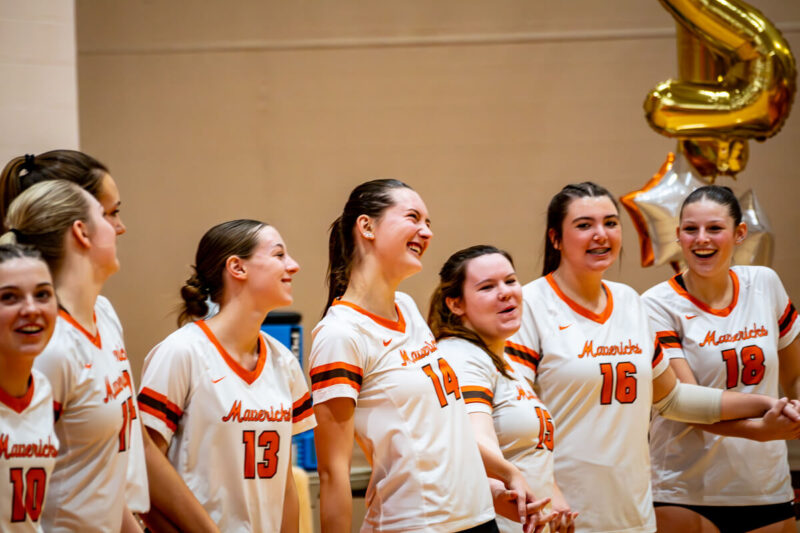
As for the game itself, it was a fairly simple matter: Greenwood’s divisional record before tonight was 1-12. We’d already beaten them once, and we won easily tonight. But I have to hand it to those Greenwood girls: it takes a lot to keep coming out game after game when you’re stacking up loss after loss, almost all of them in straight sets.

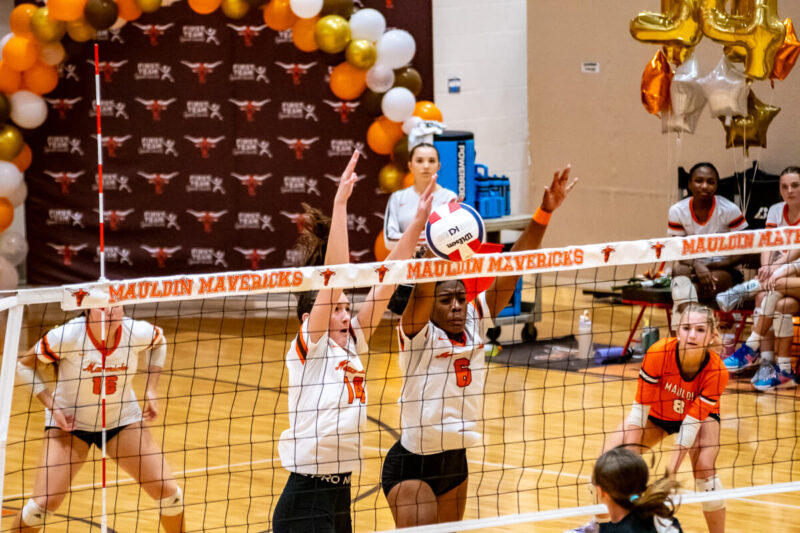
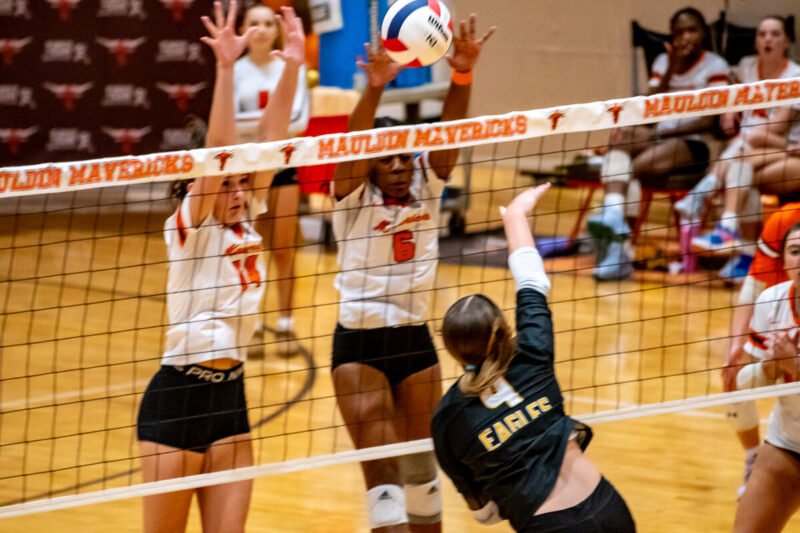
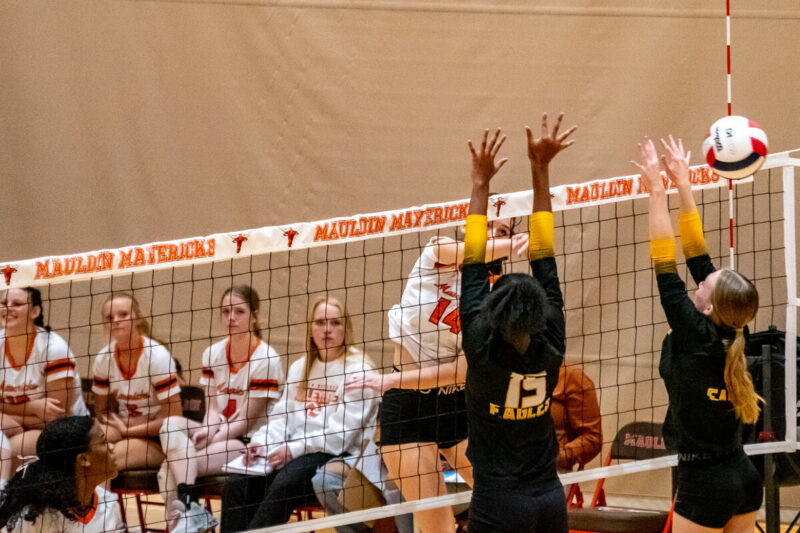
Afterward, there were the usual shots — with the unusual shirts.
